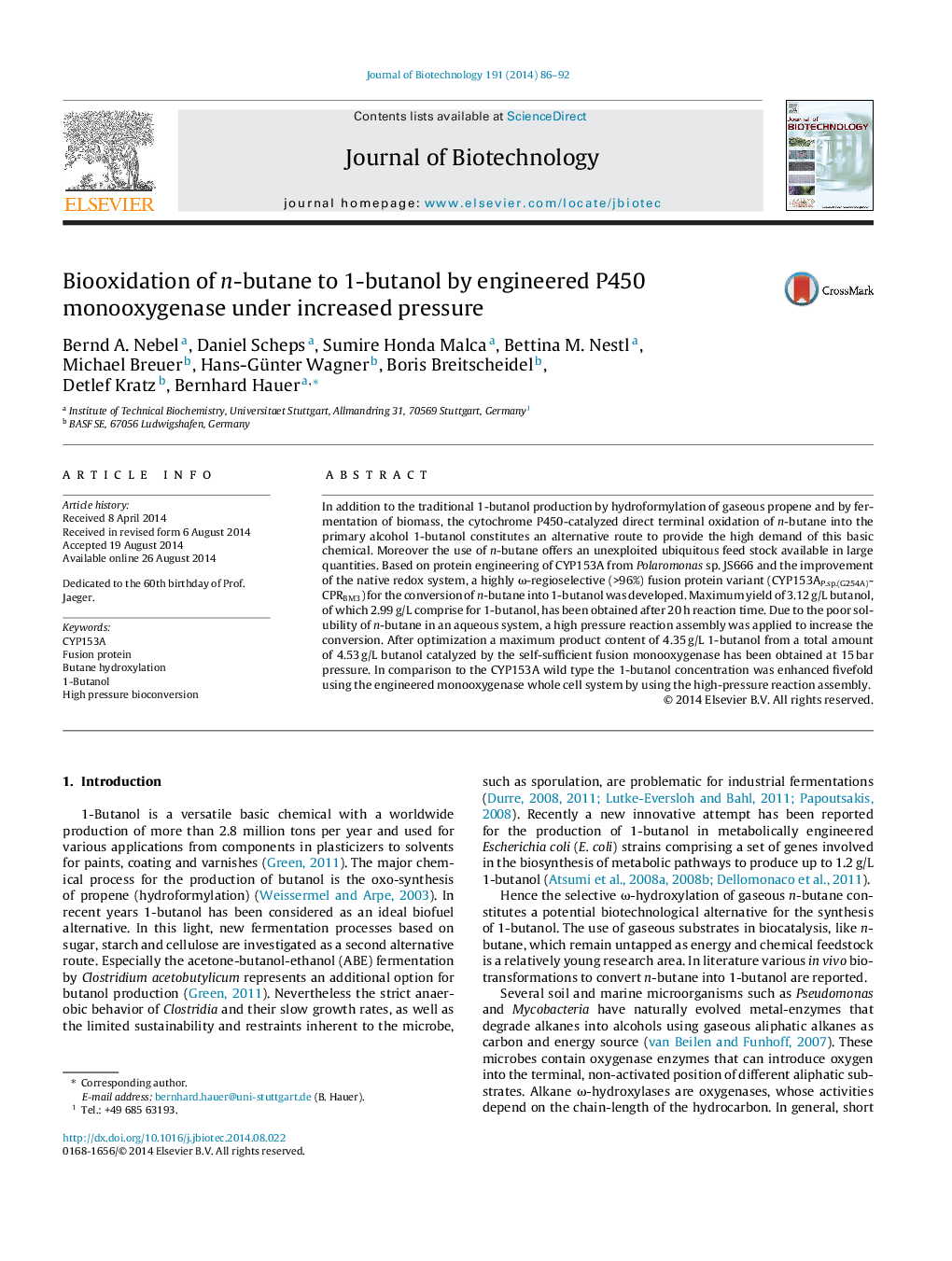| کد مقاله | کد نشریه | سال انتشار | مقاله انگلیسی | نسخه تمام متن |
|---|---|---|---|---|
| 23002 | 43409 | 2014 | 7 صفحه PDF | دانلود رایگان |

• We developed a fusion protein variant CYP153A for the conversion of n-butane to 1-butanol.
• Maximum yield of 3.2 g/L butanol after 20 h reaction time.
• Under 15 bar pressure a total amount of 4.53 g/L butanol was obtained.
• Using the engineered monooxygenase system and the high pressure reactor a fivefold enhanced product concentration could be accomplished.
• For a commercial feasible process butanol concentration has to be further improved at least ten times.
In addition to the traditional 1-butanol production by hydroformylation of gaseous propene and by fermentation of biomass, the cytochrome P450-catalyzed direct terminal oxidation of n-butane into the primary alcohol 1-butanol constitutes an alternative route to provide the high demand of this basic chemical. Moreover the use of n-butane offers an unexploited ubiquitous feed stock available in large quantities. Based on protein engineering of CYP153A from Polaromonas sp. JS666 and the improvement of the native redox system, a highly ω-regioselective (>96%) fusion protein variant (CYP153AP.sp.(G254A)-CPRBM3) for the conversion of n-butane into 1-butanol was developed. Maximum yield of 3.12 g/L butanol, of which 2.99 g/L comprise for 1-butanol, has been obtained after 20 h reaction time. Due to the poor solubility of n-butane in an aqueous system, a high pressure reaction assembly was applied to increase the conversion. After optimization a maximum product content of 4.35 g/L 1-butanol from a total amount of 4.53 g/L butanol catalyzed by the self-sufficient fusion monooxygenase has been obtained at 15 bar pressure. In comparison to the CYP153A wild type the 1-butanol concentration was enhanced fivefold using the engineered monooxygenase whole cell system by using the high-pressure reaction assembly.
Journal: Journal of Biotechnology - Volume 191, 10 December 2014, Pages 86–92